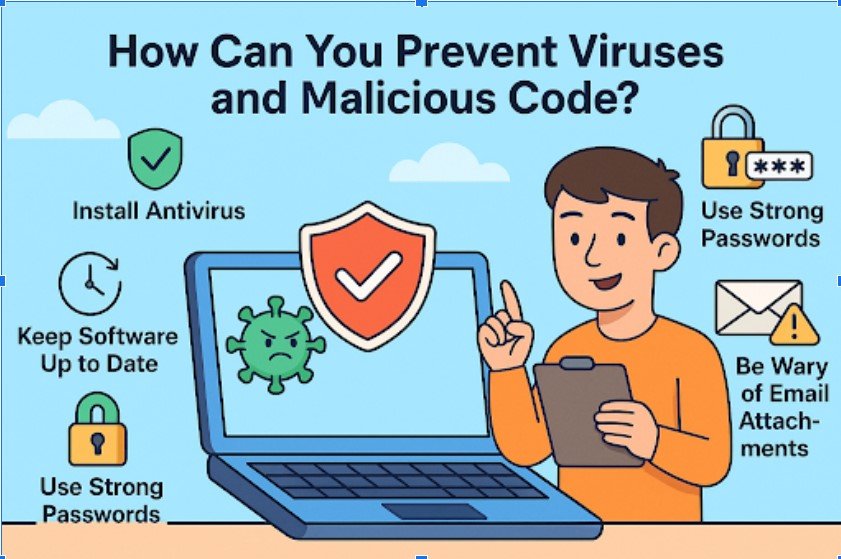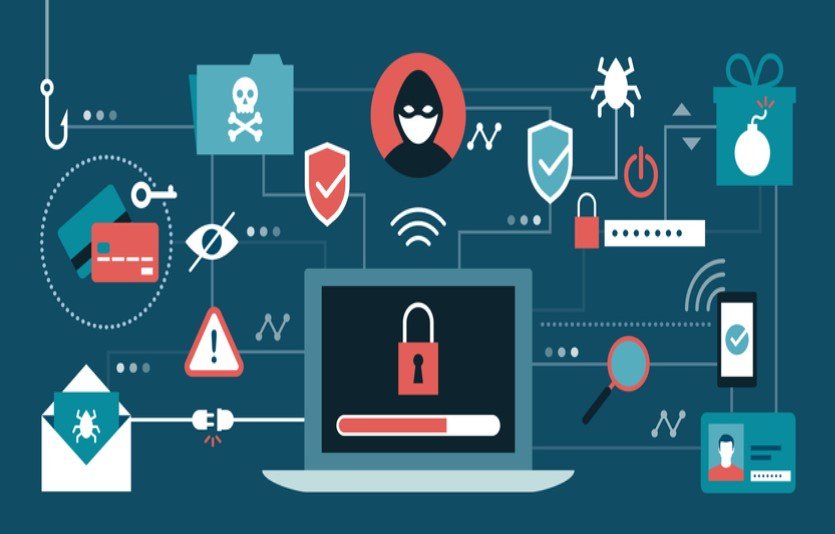responsibility to protect our systems and the trust of those we serve.Malicious code is a critical application security issue, data exfiltration, financial loss, and more. This malicious code article talks about the major types of malicious code you must look out for, how you can stop malicious code, and how an information security management system software may be part of your solution.
Malicious code, in the sense of any software or script written to exploit vulnerabilities and cause damage, represents an increasing challenge for application security. For simplicity, one could say that malicious code is a method through which an attacker crafts their cyber-attacks. Threat actors use malicious code to gain unauthorized access to devices or networks, taking control or stealing data from them, among other malicious results.

How Can You Prevent Viruses and Malicious Code?
- Malicious code is a catch-all- All category of threats that includes worms, trojans, ransomware, and spyware. Each acts just a little bit differently from the others. For example, worms spread on their own across networks. Ransomware encrypts your data and requires money for the key. And spyware? It quietly sits in the background, tracking your activity without your permission.
- Apply Antivirus & Malware Solutions- Antivirus and anti-malware solutions are the first line of defence against viruses and malicious code. They detect threats through signature-based, heuristic analysis, and behavioural monitoring. If you keep your antivirus software updated, it will most likely ensure protection against recent threats. Also, you can integrate tools with endpoints, servers, and cloud platforms for comprehensive protection.
- Regular Patching and Updates- Unpatched systems and software are the prime target of viruses and malicious code. Make regular updates to reduce vulnerabilities that attackers can exploit. It is also very important to institute an automated patch management process for operating systems, applications, and firmware.
- Improve Cyber Awareness Among Employees- It is one of the best prevention strategies, which includes cyber awareness training. In most cases, users and developers are the first line of the most common target for an attacker, so they need to be trained in convenient ways. Educating the employees on how to identify phishing emails, suspicious links, and probable malware will play a key role. Regular training on secure practices is highly recommended.
- Apply Network Security Measures- A secure network reduces the chances of malware proliferation. Utilize firewalls and intrusion detection/prevention systems to scan and block malicious traffic. Network segmentation prevents the lateral movement of malware. Use VPNs to ensure secured remote access.
- Educate Employees- Most of the time, human error is indeed the weakest link. There should be regular training sessions on phishing attempts, social engineering, and dubious downloads. Employees have to be made aware of the danger associated with clicking on unknown links or downloading attachments from unknown sources.
- Back up regularly- Do not let ransomware take away what took you millions to build over the years. This practice will help you get on your feet the moment an attack happens.
- Prevent Malware from Spreading via Compromised Accounts- Inbound filtering cannot stop the threats that come from a compromised internal account. That is why outbound email security is crucial to detect and block malicious messages before they reach your partner or customer. Advanced gateways scan outgoing traffic for malware, anomalies, and sensitive data while quarantining the threats and alerting security teams. They will also enforce encryption and paired with inbound controls, outbound protection secures email as a communications channel, although ongoing user awareness is still required in order to minimize risk.
What Do You Need to Know About Antivirus Software?
Antivirus software scans the computer files and memory for patterns that indicate the possible presence of malicious code. You can perform antivirus scans automatically or manually, in which information security management software helps you to automate every function.
Automatic Scans – Many of these programs automatically scan specific files or directories. Since many new viruses are being found all the time, this is a good option to use.
Manual Scans- If your antivirus software is not set to automatically scan new files, then you should manually scan files and media that you receive from an outside source before opening them. This includes email attachments, web downloads, CDs, DVDs, and USBs.
How Malicious Code Can Affect Organizations?
The risks from any malicious code could run from data security threats to operational and reputation risks. As computer technology advances, cyberattacks evolve, too, leading to an increase in threats that face companies.
In this regard, here are some of the major ways in which malicious code impacts an organization-
- Data Breaches- Malware primarily causes data breaches, through which confidential information of customers, financial records, intellectual property, and even trade secrets are exposed. Malware, such as spyware or a keylogger, steals required information from a system and is sold on the dark web or used for evil deeds. One example of direct money lost is in data breaches, but at the same time, consumers’ trust is lost. When a customer loses faith in the credibility of an organization regarding the protection of their information, it leads to lost business, bad publicity, and serious reputational damage.
- Operational Disruption- The most immediate and expensive impact due to malicious code is operational disruption. Malware can also be in the form of ransomware; it could lock crucial systems, data, or even cause shutdown of whole networks in such a way that a business is put out of commission for hours or even days. Such disruptions could result in catastrophic consequences in healthcare, finance, or manufacturing, industries that strictly require an uninterrupted workflow, which might threaten public safety, delay financial transactions and derail production.
- Reputational Damage- The malicious code attack can cause serious reputational damage to the business in case of a data breach or serious disruption of services. Customers and business partners alike may lose faith in the company’s capability for data protection or securing operations. Public disclosure of a security incident may result in adverse media coverage and may harm the brand image. It becomes tough for the company to hold onto clients or attract new business. In a long-term context, reputational damage reduces market value and restricts business growth.
- Legal Repercussions- If the intrusion of malicious code leads to information leaks or failure to prevent sensitive data disclosures, serious consequences arise for organizations under relevant laws. Such organizations are likely to be levied with heavy fines, sanctions, and lawsuits by affected parties. Fighting these in courts can be expensive and time-consuming, which not only adds to the financial cost but also makes it difficult for organizations to recover quickly from a cyberattack.
Conclusion
Malware poses a significant threat to our digital data and operational integrity. Individuals and organizations can strengthen their defences by fostering cybersecurity awareness. Robust preventative measures are essential. Regular backups to offline storage are a non-negotiable defence pillar. Even in the event of a breach, we can recover swiftly and minimize losses. We must adapt and evolve our strategies to outpace malicious actors. Implementing best practices is not just a technical necessity. It is a fundamental

